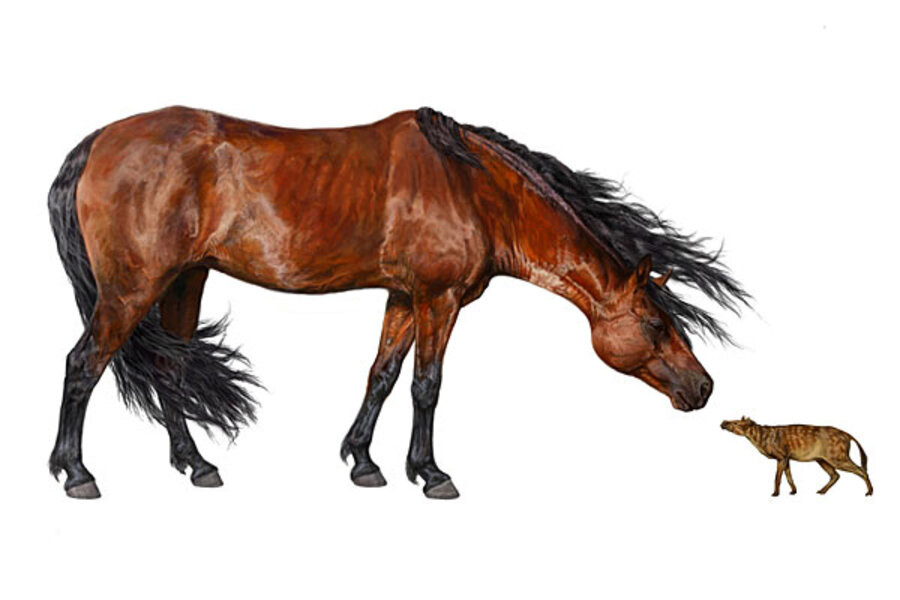How global warming created tiny horses
Loading...
An ancient global warming event shrunk the earliest horses down to the size of scrawny housecats, according to new research that could have implications for what mammals might look like in a future warming world.
During what's known as the Paleocene-Eocene Thermal Maximum, or PETM, about 56 million years ago, a massive release of carbon into the atmosphere and oceans boosted average global temperatures by about 10 degrees Fahrenheit (5.5 degrees Celsius) over 175,000 years. Mammals responded to this climate change by shrinking, with about one-third of species getting smaller.
Now, new research reveals that these changes occurred in lockstep with temperature fluctuations during the period. The earliest-known horse Sifrhippus started out this period as a bit of a pipsqueak: The animals weighed only about 12 pounds (5.6 kilograms) on average, about the size of a miniature schnauzer.
But by 130,000 years into the PETM, Sifrihippus had shrunk down to only about 8.5 pounds (3.9 kg), the size of a small housecat. These humble horses then experienced a size rebound, bulking up to about 15 pounds (7 kg) in the last 45,000 years of this warm period, putting them on par with the average bichon frise.
Horse's mouth
Researchers led by Ross Secord of the University of Nebraska, Lincoln, and Jonathan Bloch of the Florida Museum of Natural History at the University of Florida were able to track these changes over time using a trove of fossils from the southern Bighorn Basin in Wyoming. Measurements of horses' teeth found in the area suggested a distinct pattern of shrinking and growing body size over the PETM time period. At first, that finding seemed like a mistake, Bloch told Livescience, because the assumption had been that horses in the PETM were all uniformly teeny.
The researchers then analyzed the oxygen isotopes (atoms of the same element with different masses) in the horse teeth, which serve as markers of local temperatures at the time the horses died. They found that temperatures perfectly matched up with size measurements. The hotter it got, the smaller the horses. Other factors, including aridity and carbon dioxide concentration, did not match up as well.
"This, for the first time, tells us that temperature is what's driving the body size evolution for these horses," Bloch said. He and his colleagues reported the findings today (Feb. 23) in the journal Science.
The findings fit with what is known about modern-day mammals and birds, which are generally smaller near the equator. This may be because smaller size helps animals regulate their body temperatures in the heat, or perhaps because of the availability of food sources. (Much of the land near the equator is arid, and food sources are slim, Bloch said.) [Gallery: One-of-a-Kind Places on Earth]
Mammals in a warming world
The world experienced about the same amount of warming during the PETM as some climate models project it will in response to today's greenhouse gas emissions. The difference, Bloch said, is that the warming in the PETM happened over 170,000 years, while modern temperatures could reach PETM levels within a century or so if projections are correct.
"While our study provides a measure of possible response to global warming — that is, getting smaller — in a sense that is the best-case scenario," Bloch said. If animals can't evolve quickly enough to keep up, they're more likely to go extinct.
"It can only get worse, basically," Bloch said.
You can follow LiveScience senior writer Stephanie Pappas on Twitter @sipappas. Follow LiveScience for the latest in science news and discoveries on Twitter @livescience and on Facebook.





